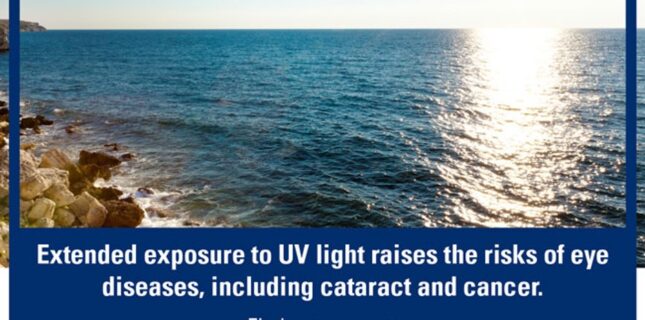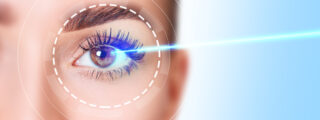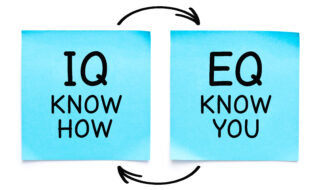
Prevent Blindness & the UV Message
Prevent Blindness has designated May as UV Awareness month. It’s a great opportunity to deliver that message to patients in your own practice, and the Chicago-based organization makes it easy.
In addition to a dedicated webpage, PreventBlindness.org/sun-and-vision, there are:
• Downloadable fact sheets, including one on “UV and Your Eyes” and another on selecting sunglasses for a child
• Six shareable social media infographics for you to use (including the one featured here)
• And even a UV awareness quiz
Many of the pieces are available in several languages, including Spanish and Chinese.
Tip: “Unlike the mature lens of an adult eye, a child’s lens cannot filter out UV rays and so more radiation reaches the retina.”
AT-RISK PATIENTS
Prevent Blindness refers to the Hidden Dangers of UV: Keeping Your Eyes Safe report from The Vision Council. It details several factors—like geography, age, and eye color—that put some people at a higher risk of damage from UV exposure. Those factors include:
• LOCATION. People in the southern U.S. tend to receive more intense solar rays than those in northern locations. Elevation can also factor in, since the thinner atmosphere at higher altitudes cannot absorb as much radiation. On the water, sand or the water itself can reflect up to 25% of UV. On a snowy surface, up to 80% of UV may be reflected.
• AGE. Every year, children receive three-times more sun exposure than adults, and research indicates that their young eyes are especially susceptible to UV-related damage. “Unlike the mature lens of an adult eye, a child’s lens cannot filter out UV rays and so more radiation reaches the retina,” reports Prevent Blindness. “At the same time, decades of sun exposure make older people’s eyes much more prone to visual problems and disease.”
• EYE COLOR. Some studies suggest that blue eyes are at more risk for UV damage than brown eyes. According to Prevent Blindness, “The protective pigment melanin may be the key detail—blue irises have less of it—and a higher incidence of age-related macular degeneration may be one consequence.”
How do you educate your patients about the dangers of UV exposure? Tell us about it and share in the conversation on Facebook here.

Comments are closed.









